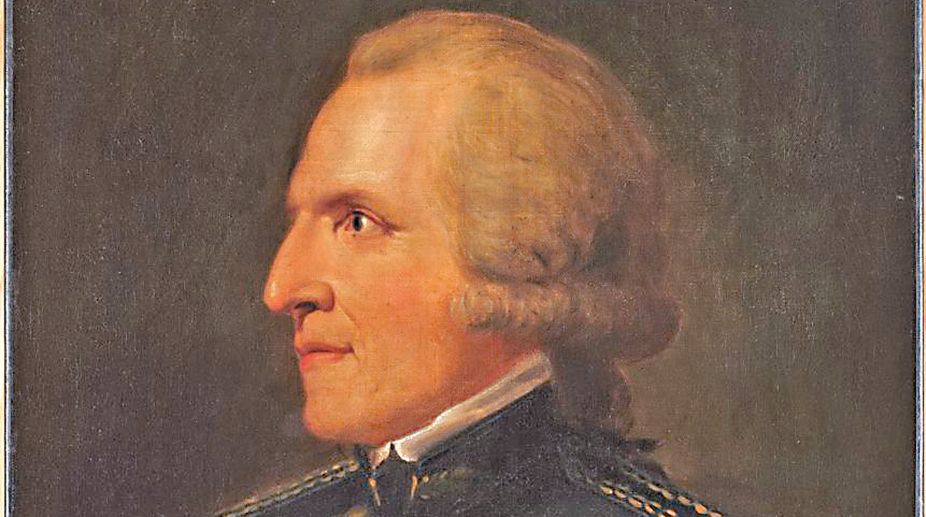Galileo’s damage control
The scientist considered prudence the better part of valour while dealing with Papal orthodoxy.

Benjamin Thompson
Benjamin Thompson, who fled the US and became a Bavarian Count, did important work on the mechanical equivalent of heat.
Thompson was born in 1773 in a small town in Massachusetts. He went to the village school but often visited the Harvard College in Cambridge, nearby, to attend lectures, was fascinated by perpetual motion machines and took interest in eclipses. At the age of 18 he became a schoolmaster in the town of Rumford in Massachusetts and married a wealthy widow many years his senior. With her help and influence, he got a position in the New Hampshire Militia. But during the American Civil War, his strong pro-British convictions went down poorly with the popular rebel party and Thompson abandoned his wife and crossed lines to the loyalist forces.
During the rest of the war, apart from passing military intelligence to the British, using devices like invisible ink, he carried out lunar observations and conducted experiments, which were later acclaimed, on the speed of projectiles fired by cannon and the properties of gunpowder.
Advertisement
When he did go over to England after the war, he already had a reputation as a scientist and he was soon elected a Fellow of the Royal Society.
During the next years in England, after what has been described as “unforgivable social climbing”, he migrated to Bavaria, where he rose to a high position in the court and the military. He spent 11 years in Bavaria, applying his talents in reorganising the army and the administration of the state. It was during this period — while working in the foundries that bored the barrels of the cannon — that he made observations, which ran counter to the current theory of heat.
Heat, at the time, was considered to be a kind of fluid, an aether called caloric, which flowed in and out of materials. Caloric was considered to be indestructible and incapable of being created, perhaps the last of the Aristotelian ideas of the four essences of matter — earth, air, water and fire. The word, caloric, for the essence of heat, in fact, had been coined by Lavoisier, the French chemist who had proved that mercury got heavier when it burned, not lighter!
Thompson was able to see that labour was expended in driving the bit that bored the barrels, which in turn grew so hot that they could keep the cooling water continuously boiling. The conclusion was not difficult to reach, that the heat came from mechanical work, not any currents of caloric! In 1798, Thompson published his work as An Experimental Enquiry Concerning the Source of the Heat which is Excited by Friction in the Philosophical Transactions of the Royal Society. That was the start of a scientific look at heat and work, which led to the laws of thermodynamics, the steam engine, petrol engine and all else!
Thompson made important contributions to the administration of the Bavarian state and brought the scientific method to dealing with civic problems. One area was of engaging the impoverished peasant population of the country in paid work in state workhouses — to make uniforms for the army, which was itself in low morale. He developed a specially formulated “soup” that was economical and nutritious and was served both in the army and in the workhouses. This may be considered one of the earliest scientific steps in the domain of dietetics. The Bavarian State recognised his services and he was made a count. As his title, he took the name of his hometown, as Count Rumford.
Count Rumford, went on to be celebrated for many inventions, including the double boiler, a kitchen range, the pressure cooker, the folding bed and he became well known for important improvements that he made in the design of fireplaces.
The Rumford fireplace was tall and shallow to reflect more heat, and had a streamlined chimney. The design of the chimney helped eliminate turbulence and allowed the smoke to rise as an even stream without mixing and carrying away the least warm air from the heated room. This improved comfort and saved fuel.
In 1796 and in 1798, he wrote two papers detailing the improved design of the fireplace, which were widely read and in the 1790s the “Rumford fireplace” became state-of-the-art worldwide.
In a few years, Count Rumford left Bavaria for England and France, and followed a life as successful, both in science and commerce and as colourful in the arts and in amorous escapades. In 1796, he gave $5,000 each to the Royal Society of Great Britain and to the American Academy of Arts and Sciences to award medals every two years for outstanding scientific research on heat or light. When he died most of his considerable fortune went to Harvard University.
But even if there were none of these contributions to science or notoriety, Count Rumford would still be immortal for his invention of the “drip-pot coffee percolator”. It is the simple arrangement of two containers, one above the other, with the base of the upper one pierced with little holes. Pure coffee powder is packed in the upper container and covered with boiling water. The water drips into the lower container, as the aromatic decoction. The device came to India with the British and was promptly adopted by South Indians – much to the joy of coffee drinkers.
Advertisement